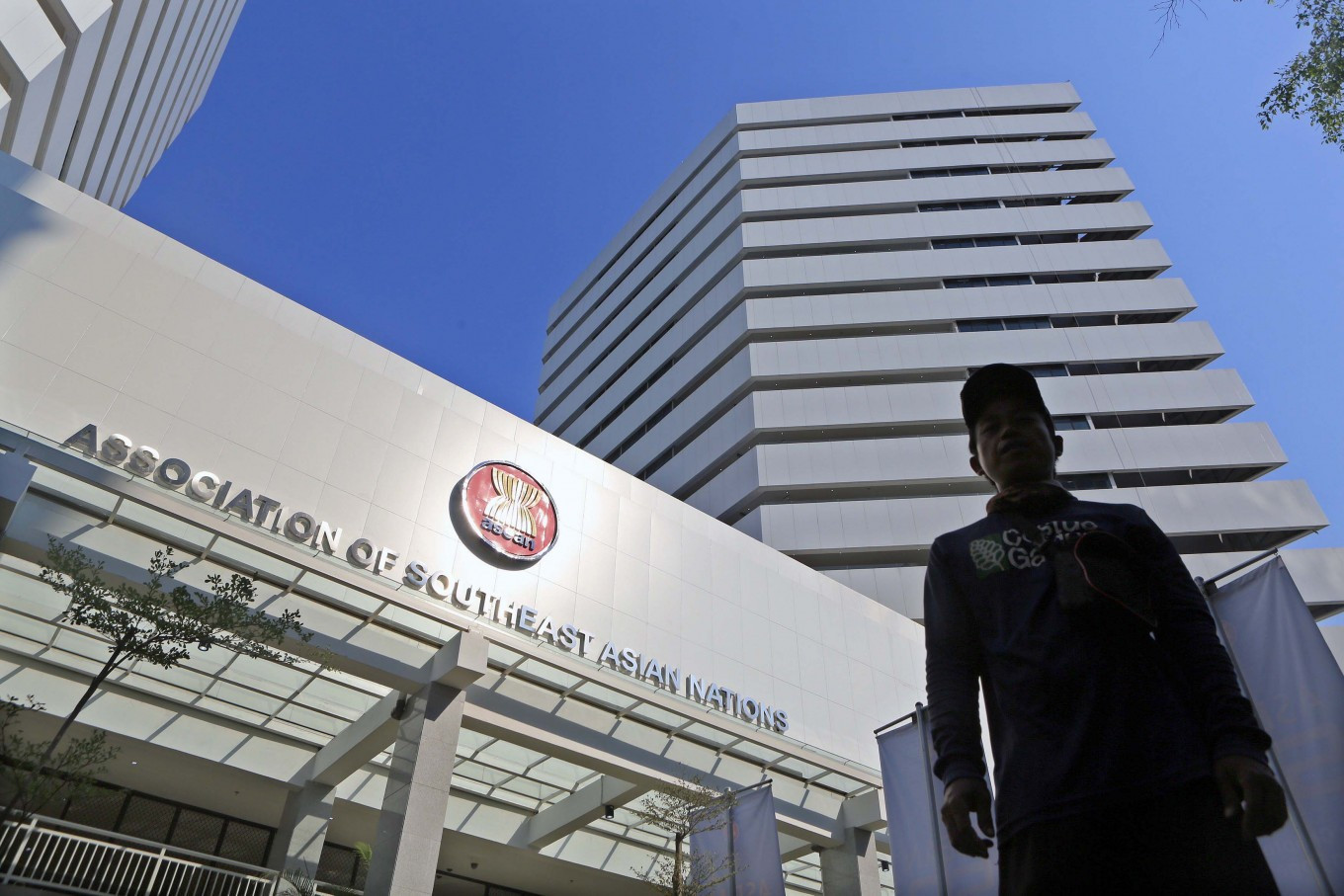News
US tariffs present challenges, opportunities for Indonesia
Tenggara Strategics April 15, 2025 The ASEAN secretariat building in Jakarta was inaugurated in August 2019 in conjunction with the 52nd anniversary of ASEAN. (JP/Seto Wardhana)
The ASEAN secretariat building in Jakarta was inaugurated in August 2019 in conjunction with the 52nd anniversary of ASEAN. (JP/Seto Wardhana)
United States President Donald Trump has reignited global trade tensions by imposing reciprocal import tariffs on 180 trading partners, with rates starting at 10 percent and rising significantly for 60 countries, including Indonesia, which now faces a 32 percent tariff, although now paused for three months. While Indonesia benefited modestly from the first US-China trade war in 2018, the dynamics of this second wave of trade retaliation demand a recalibrated strategy to unlock potential economic gains.
The US has long grappled with a twin deficit, budget and current account, dating back to the 1980s. President Trump has consistently blamed trade deficits on unfair practices by key partners such as China, Canada, Mexico and, to some extent, Indonesia. His administration argues that reducing these imbalances is essential to protecting American industry and jobs.
However, many economists warn that these policies distort the natural flow of trade, which should ideally capitalize on comparative and competitive advantage, the ability of countries to produce certain goods more efficiently than others. While US money may flow out through trade deficits, it often returns in the form of foreign investment, an area where the US maintains a strong competitive edge.
China remains the US' largest competitor in trade, with bilateral trade reaching US$585 billion in 2024 and a US trade deficit of $295 billion. As a result of tit-for-tat tariffs, China’s share of US imports fell from 21 percent in 2016 to 13 percent in 2024. Much of China's exports have been rerouted through Southeast Asian countries, including Vietnam, Malaysia, Thailand and Indonesia.
Still, Indonesia was hit with one of the higher tariff rates among ASEAN countries, ranking eighth with a 32 percent duty. This figure, derived through a simplified and questionable formula based on trade deficits, has raised concerns about the fairness and transparency of the US approach.
The US is Indonesia’s second-largest non-oil and gas export destination after China, accounting for 10.6 percent of total exports. From 2018 to 2024, Indonesia’s exports to the US surged by 43 percent, expanding the trade surplus from $8.6 billion to $14.34 billion. But the Trump administration has also criticized Indonesia's use of non-tariff barriers, such as local content requirements and foreign exchange rules on natural resource exports.
During the first trade war, Indonesia gained from trade diversion and increased foreign direct investment (FDI) as companies looked to relocate from China. Indonesia also took steps to expand its market access through regional agreements like the Regional Comprehensive Economic Partnership (RCEP), ASEAN Plus Three (a framework for economic cooperation between ASEAN and China, Japan and South Korea) and BRICS.
However, the current situation is more complex. Higher tariffs on Indonesian goods limit its ability to act as a substitute for Chinese products and reduce the likelihood of benefiting from China’s outbound FDI. Additionally, a global slowdown triggered by ongoing trade tensions could dampen demand for Indonesian exports, particularly in competitive sectors like machinery, apparel and footwear.
Despite these challenges, there is cautious optimism. Indonesia’s exports to the US represent only 2.2 percent of its GDP, far lower than Vietnam’s 30 percent, making Indonesia less exposed to US tariffs. Additionally, the country’s relatively low integration in global supply chains offers some insulation.
Indonesia also has room to negotiate. Less than 24 hours after the tariffs took effect, President Trump announced a 90-day delay in enforcement, offering a valuable window for diplomatic engagement. Indonesia’s neutral geopolitical stance could work to its advantage in talks.
To mitigate the impact and turn adversity into opportunity, Indonesia could fast-track trade agreements such as the Indonesia-EU Comprehensive Economic Partnership Agreement (CEPA) and its accession to the OECD, while optimizing the RCEP framework. Preferential trade agreements with the US may also be worth exploring. Furthermore, Indonesia can deepen its economic integration with ASEAN neighbors to promote export diversification and attract investment in intermediate goods from lower-tariff countries like Singapore and Malaysia.
Beyond external strategies, Indonesia could use this moment to push forward domestic economic reforms. Improving the business climate, lowering production costs and boosting productivity are essential to strengthening the country’s global competitiveness.
The mid-1980s experience offers a precedent: Indonesia responded to external shocks with deregulation and currency devaluation, measures that significantly enhanced export competitiveness. A similar approach today, tailored to modern economic conditions, could help Indonesia weather the current trade storm while laying the groundwork for long-term resilience.
What we've heard
Several sources say that Coordinating Minister for Economic Affairs Airlangga Hartarto was actually scheduled to hold a press conference the day after United States President Donald Trump announced reciprocal tariffs on Indonesia. The press conference invitations had already been distributed, however the press conference was canceled because President Prabowo Subianto could not give it the green light.

